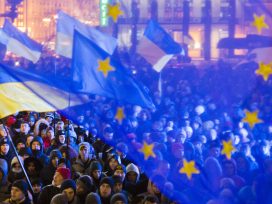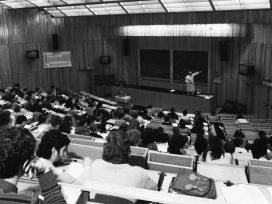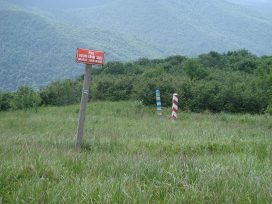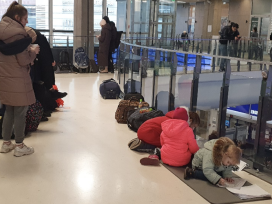On every corner of Vienna
Vienna’s hosting of Ukrainian artists and writers recalls the days of the fin de siècle, when the city was a magnet for intellectuals seeking freedom from Tsarism. But despite strong historical affinities, subtle barriers to solidarity with the Ukrainian exiles remain.
Three women and four little girls stand on the platform of a Vienna metro station. The women speak in Russian to one another as the girls play around them. The girls suddenly join hands and begin to move in a circle while singing the Ukrainian folk song ‘Oi u luzi chervona kalyna…’. The song, which promises to raise up Ukraine as one might revive a wilting tree, became an unofficial anthem of Ukraine’s resistance after a video of the rock singer Andrii Khlyvniuk performing it in his army uniform went viral (it was even covered by Pink Floyd). On another summer afternoon, the tentative notes of the same melody drift into the air from an open window. Perhaps the child of Ukrainian refugees is getting in some practice after being separated from their piano back home.
Like in many European cities, encounters with Ukraine and Ukrainians are an everyday occurrence in Vienna these days. The Ukrainian language, or Russian with a distinct Ukrainian accent, can be heard on almost every street corner. The city’s Ukrainian community has mobilized to help the refugees who are swelling its numbers, to send aid back home, and make the Ukrainian voice heard in the Austrian capital – a place well-known for its political cosiness with Russia.
Ukrainians in Vienna are nothing new. The Habsburg Empire inherited millions of them when it annexed the lands that are today western Ukraine from Poland in the late 18th century. The Empire’s capital drew them in as it drew in all the imperial minorities. Vienna’s Ukrainian Greek Catholic church, on Postgasse in the city centre, dates from 1783; while a certain Georg Franz Kolschitzky lends his name to a street near the main station. The statue on the same street celebrating the Ukrainian-Polish merchant, spy and hero of the Siege of Vienna has him holding a Turkish coffeepot. According to the legend, beloved by Ukrainians and locals alike but most likely invented, Iurii-Franz Kulchytskyi introduced coffee to the Viennese in 1683.
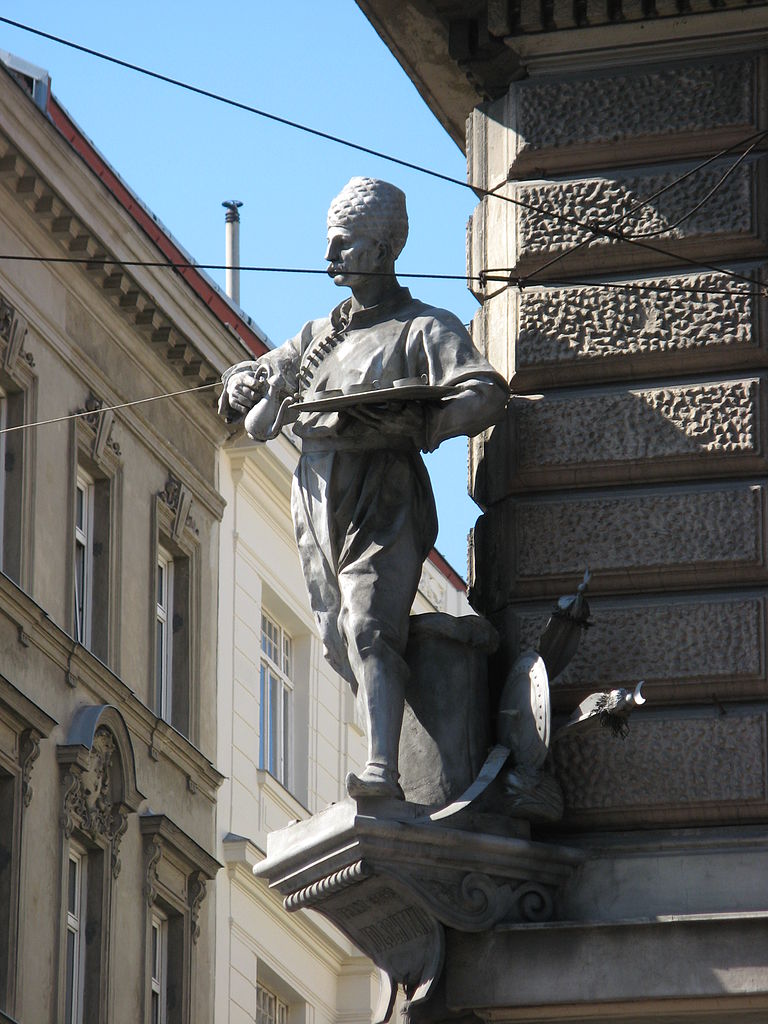
Monument to Georg Franz Kolschitzky (Iurii-Franz Kulchytskyi) in Vienna. Author: Buchhändler; source: Wikimedia Commons
In the 19th and early 20th centuries, as most Ukrainians languished under repressive Russian rule, Vienna represented an attractive centre of cultural and political gravitation. While Russia all but banned Ukrainian culture towards the end of the 19th century, Ukrainian cultural and linguistic rights were respected in Austria. Habsburg Ukrainians even enjoyed political representation in the imperial legislature. Ivan Franko, the great western Ukrainian writer-activist, defended his doctoral dissertation in Vienna and stood for election to the Viennese parliament.
An apocryphal story tells of a fateful meeting between Franko and Theodor Herzl in a Vienna coffeehouse, after which Franko began to view Zionism as a model for the Ukrainian national project. Like the Jews, the Ukrainians were a repressed minority spread across various European empires with no modern tradition of statehood to call on. Whether the meeting really took place is disputed, but Franko certainly became interested in Zionism, as was reflected in his positive review of Herzl’s Der Judenstaat and his epic poem Moses (1901), which was banned in the Soviet Union as covert Zionist propaganda.
Lesia Ukrainka – the pseudonym of Larysa Kosach, a pioneering feminist and dramatist – visited Vienna from Russian-ruled central Ukraine in the early 1890s in search of a cure for her tuberculosis. As a young woman, she was inspired by the city’s modern architecture and the vibrancy of its culture. Her early dramas bear the distinctive influence of decadence and Freud – a shocking development in the conservative Ukrainian literature of the time.
Her lasting impression was bittersweet, given the contrast with the suffocating atmosphere in the Russian Empire. ‘I’ve never felt so painfully how heavy these chains are or how that yoke has tormented my neck,’ she wrote in a letter in 1891. ‘I don’t know if I have ever felt such heavy, burning, bitter sorrow over this as I do here, in a free country…’ One of the highlights of Lesia Ukrainka’s stay in Vienna was the chance to debate literature and politics with the local branch of the Ukrainian youth association, or Sich. Here she enthused over French symbolism and was frustrated by her compatriots’ dogged adherence to the naturalism espoused by populists like Franko.
The Vienna Sich was one of the inspirations for a group of young Ukrainian activists to form the Ukrainian Youth Society of Austria (TUMA) in 2010. Vienna’s historical ties to Ukraine mean that it is still, as it was in the late 19th century, a natural centre for gravitation for Ukrainians students. For the same reason, local universities and academics still take an interest in developments in the former Habsburg lands to the east.
In contrast to Lesia Ukrainka’s time in the capital, disputes over the utility of art for the national cause may no longer be on the agenda for Vienna’s young Ukrainians, but patriotic duties certainly are: TUMA became a key player in promoting Ukrainian culture in Vienna after the Maidan revolution in 2014 and has been central to the organisation of both the volunteering effort and the regular pro-Ukraine demonstrations held in the city since February 2022.
The energy and determination of organisations like TUMA or, for example, the Ukrainian Institute London are characteristic of the new Ukrainian diaspora. Ukraine has had a large and active diaspora for many decades, particularly in North America, but recent years have changed its dynamics. As in Ukraine itself, Maidan and the annexation of Crimea sparked a revival of civil society activities within the diaspora. In the early days of the current war, money raised and equipment sourced by Ukrainians in the West was crucial to the Ukrainian army, which was drastically underfunded and underequipped. Diaspora organisations around the world have filled the gap left by the state in the sphere of cultural diplomacy– it was only in 2014 that the Ukrainian state made serious, concerted efforts to promote its culture abroad.
The 2022 invasion has brought another change to the diaspora. Suddenly, it finds itself augmented by hundreds of Ukraine’s most distinguished activists, academics, journalists and cultural figures, displaced from Kyiv and Kharkiv by Russian bombs. Ukraine’s temporary loss has turned into a gain for western capitals, their universities and cultural institutions. Vienna has played host to leading Ukrainian writers and artists such as Natalia Vorozhbyt, Alevtina Kakhidze, Kateryna Babkina and Liuba Yakimchuk. The city’s Institute for Human Sciences (IWM) – for well over three decades a vibrant political and cultural point of contact between Europe’s eastern and western parts – has been particularly active, hosting dozens of scholars, writers and journalists. The picture is replicated in many other European cities, especially Warsaw and Berlin.
The Viennese public has been receptive to the wave of cultural migration and sympathetic to the plight of Ukrainians in general. Well-attended exhibitions, literary readings and film screenings proliferated in Vienna from March well into the summer. The annual Sommernachtskonzert at the Schönbrunn palace incorporated Ukrainian composers. Huge reproductions of Alevtina Kakhidze’s drawings adorned the entrance to the Museumsquartier. Ukrainian flags abound on public buildings and in the windows of private homes. Ukrainians could use public transport and enter the city’s museums free of charge.
There are certain conditions to this good will, however. Confrontation and discomfort are best avoided. An exhibition over the summer at the Albertina gallery entitled ‘The Disasters of War: Goya and the Present’ juxtaposed Goya’s famous series of prints with photographs by the contemporary Ukrainian photographer Mykhailo Palinchak. But the casual visitor, having seen only the title and promotion, would not have realised that the exhibit had anything to do with Ukraine until she entered the exhibition space.
Palinchak’s images, focusing on refugees and ruined buildings, are quietly powerful, but show no acts of violence and only one dead body (in fact, just the hand of a dead woman protruding from some rubble). The contrast with Goya’s graphic drawings, which show brutal acts of murder, rape and torture, produced an impression of squeamishness about the violence being perpetrated by the Russian army. The problem extended to the exhibit’s explanatory texts, which fail to mention Russia, referring only to ‘the outbreak of the war in [Palinchak’s] fatherland’.
Naive ‘both-sides-ism’ and attempts to ‘reconcile’ the conflicting parties are common in Austrian discourse. In September, pro-Russian (effectively pro-war) protests were allowed and protected by the police, who removed Ukrainian counter-protesters. In May, the Vienna city council released a poster campaign featuring a Russian man and a Ukrainian woman holding pieces of a jigsaw puzzle painted in the respective national colours. The motto was ‘Together. This is our Vienna.’ In the eyes of local Ukrainians, not only was talk of reconciliation far too hasty, but the implied national connection highly inappropriate.
This reticence creates a difficulty in getting through to audiences in Vienna or elsewhere. Western Europeans, even educated ones, are often ignorant about the country and need to be guided through the very basics of Ukrainian history and culture before a more complex discussion can begin. These audiences also tend to be emotionally reserved. At a discussion at the Austrian Literary Society on the importance of translation in a time of war, the activist and translator Nelia Vakhovska complained about constantly having to take the expectations of her German-language audiences into consideration when speaking about the war. ‘I’m tired of apologising for my emotions,’ she told the packed room of the Society’s grand, 18th-century headquarters. Her words were met with an awkward silence. Kateryna Iakovlenko, an art historian and writer in residence at the IWM, wrote about the phenomenon of ‘Ukrainian rage’, which is not only hard for westerners to take, but is also caused by them: ‘we have objective reasons to feel such strong emotions,’ she wrote, ‘and the main reason is European slowness and neutrality.’
Speaking to another packed-out event at the University of Graz, the London-based historian and writer Olesya Khromeychuk put it in terms comprehensible to a progressive European audience (and which she repeated in a piece for the Royal Society of Arts Journal): being an outspoken Ukrainian in the West, she said ‘is like being perceived as an angry woman who will not stop screeching about the patriarchy’. The row of displaced Ukrainian scholars being supported by the university nodded vigorously.
The observation was more than just an analogy: because Ukrainian wartime legislation allows men of military conscription age to leave only in exceptional circumstances, the Ukrainians speaking on behalf of Ukraine across European capitals are almost all women, and their gender is often a factor in the way their ‘emotional’ attitudes are received.
Vienna is a microcosm of what is happening throughout Europe. For all the faults and ambiguities around the reception of Ukrainians, the overall impression is certainly one of openness and generosity. Among the millions of grateful Ukrainian refugees are hundreds of Ukraine’s leading minds, from poets and artists to engineers and economists. Never before have Ukrainians have been so present and vocal in the intellectual and cultural forums of western Europe.
But in contrast to the days of Ivan Franko and Lesia Ukrainka, when Ukrainian writers sought to escape the cultural confines of Russia and sate their thirst for new ideas in the great cultural centres of Europe, today’s Ukrainian intellectuals in exile see themselves as teachers rather than students. The question is whether European audiences can put aside their egos and sensitivities for long enough to listen and learn.
That tentative hand carefully picking out the notes of Oi u luzi… in an airy Vienna apartment may well have been that of a refugee child. But perhaps it was an aspiring young Viennese pianist learning the tune after hearing it from her new Ukrainian classmates.
Published 31 October 2022
Original in English
First published by Eurozine
© Uilleam Blacker / IWM / Eurozine
PDF/PRINTIn collaboration with
In focal points
Newsletter
Subscribe to know what’s worth thinking about.
Related Articles
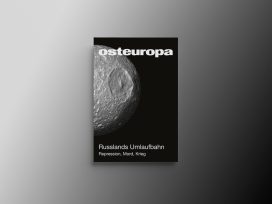
Russia’s orbit
Osteuropa 4/2024
Repression, murder, war: on the logic driving the Putin regime toward ever-greater excesses of violence. Featuring Yuri Andrukhovych on the Russian colonial empire – the only ever to have tried to reconquer a former possession. Also: articles on Navalny, and on what next for Georgia?
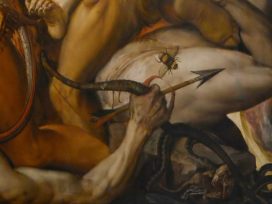
The difference between knowing from distance that war is being waged and living that reality couldn’t be more extreme. But can awareness of multiple repercussions turn protective disassociation from violence into active solidarity? ‘The Most Documented War’ symposium in Lviv, Ukraine, provides valuable pointers regarding engagement and responsibility.

